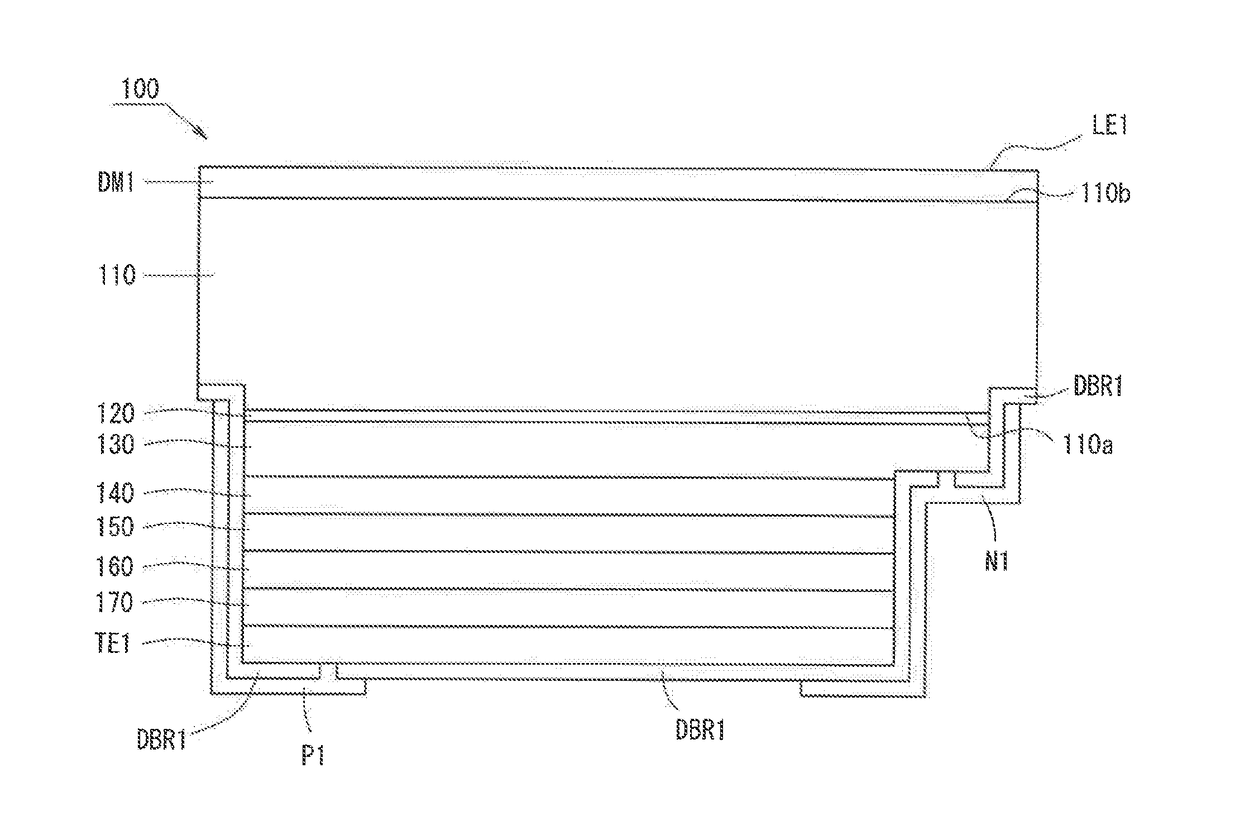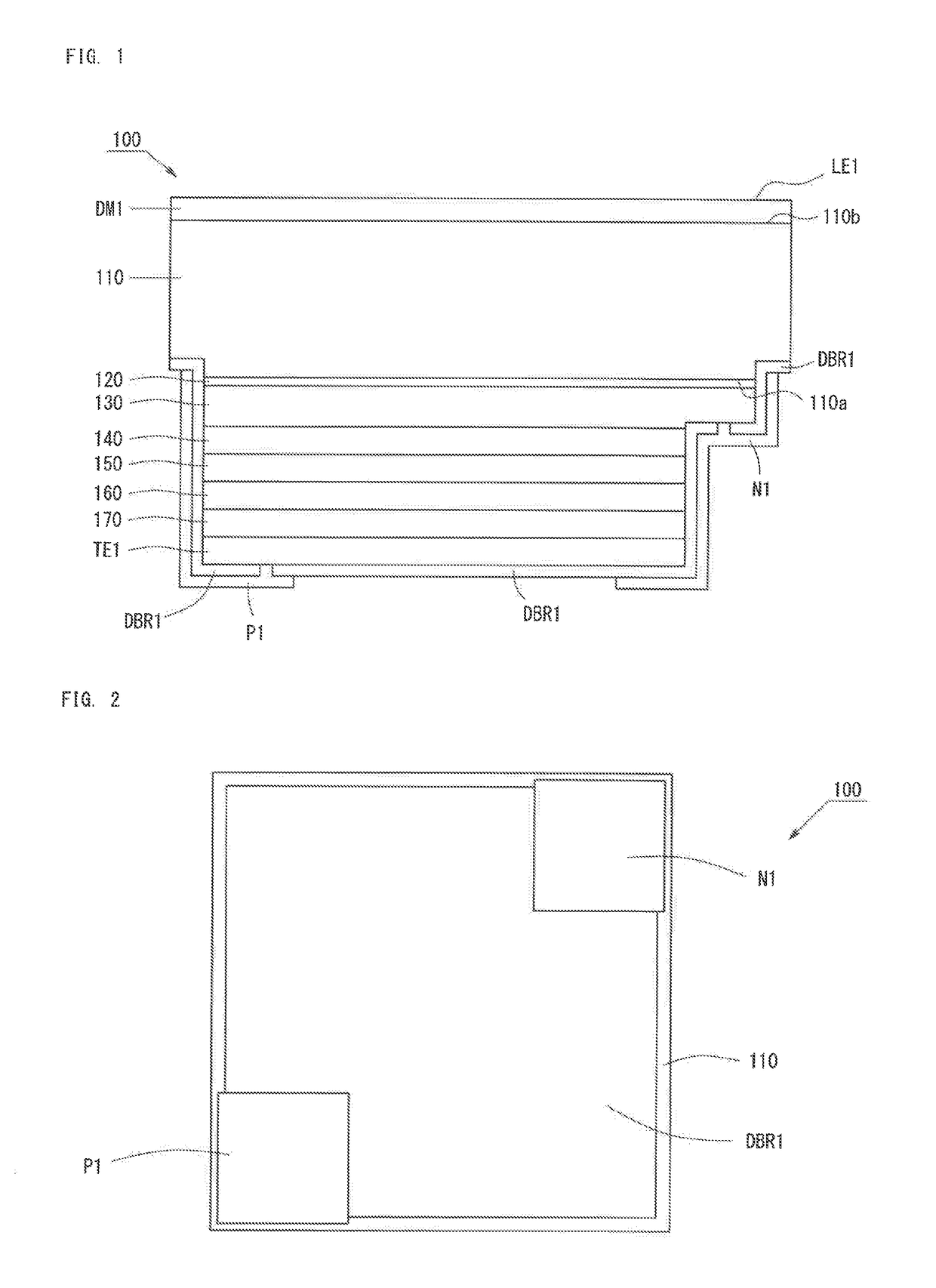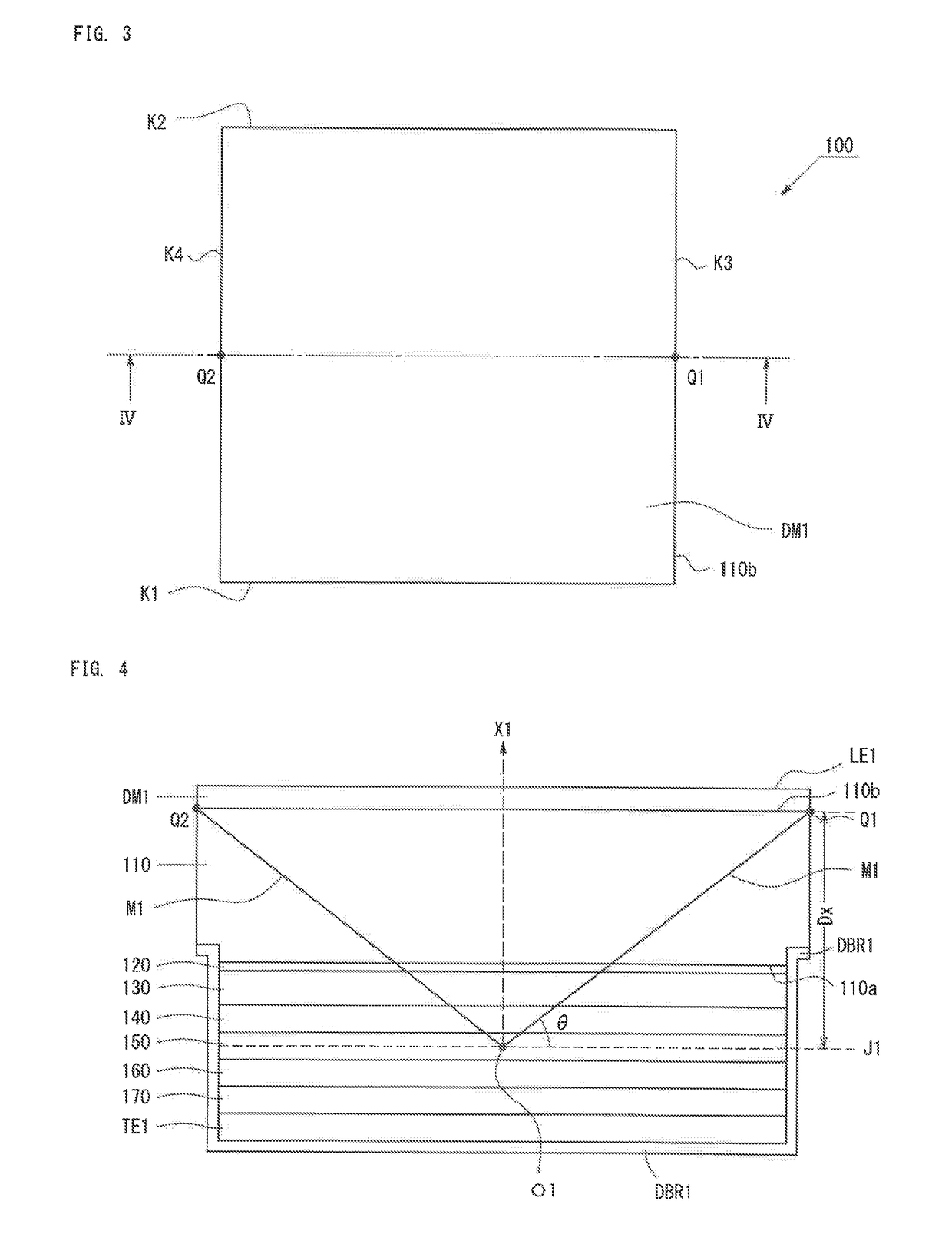Semiconductor light-emitting device
- Summary
- Abstract
- Description
- Claims
- Application Information
AI Technical Summary
Benefits of technology
Problems solved by technology
Method used
Image
Examples
embodiment 1
1. Semiconductor Light-Emitting Device
[0038]FIG. 1 is a schematic view of the structure of a light-emitting device 100 according to Embodiment 1. The light-emitting device 100 is a flip-chip type semiconductor light-emitting device having a light extraction surface on the opposite side of a semiconductor layer when viewed from a substrate. As shown in FIG. 1, the light-emitting device 100 includes a dielectric multilayer film DM1, a substrate 110, a buffer layer 120, an n-type contact layer 130, an n-side cladding layer 140, a light-emitting layer 150, a p-side cladding layer 160, a p-type contact layer 170, a transparent electrode TE1, a distributed bragg reflector DBR1, a p-electrode P1, and an n-electrode N1.
[0039]The substrate 110 is a sapphire substrate for transmitting a light emitted from the light-emitting layer 150 to the opposite side of the semiconductor layer. The substrate 110 has a rectangular parallelopiped shape. The substrate 110 has a first surface 110a and a secon...
examples
1. Experiment
1-1. Production of Sample
[0091]A light-emitting device was produced using a square substrate having a length of one side of 180 μm. Accordingly, the second surface is a square shape. A dielectric multilayer film was formed on the light extraction surface side of the light-emitting device. The dielectric multilayer film was formed by alternately depositing SiO2 and TiO2. A distributed bragg reflector was formed on the opposite side of the substrate when viewed from the light-emitting layer. The distributed bragg reflector was formed by alternately depositing SiO2 and TiO2. Four types of light-emitting devices having different thicknesses of the sapphire substrate were produced. In these four types of the light-emitting devices, a distance Dx between the surface of the substrate (corresponding to the second surface 110b) having the dielectric multilayer film thereon and the center surface of the light-emitting layer (corresponding to the center plane J1) is 40 μm, 60 μm, ...
PUM
 Login to View More
Login to View More Abstract
Description
Claims
Application Information
 Login to View More
Login to View More - R&D
- Intellectual Property
- Life Sciences
- Materials
- Tech Scout
- Unparalleled Data Quality
- Higher Quality Content
- 60% Fewer Hallucinations
Browse by: Latest US Patents, China's latest patents, Technical Efficacy Thesaurus, Application Domain, Technology Topic, Popular Technical Reports.
© 2025 PatSnap. All rights reserved.Legal|Privacy policy|Modern Slavery Act Transparency Statement|Sitemap|About US| Contact US: help@patsnap.com



